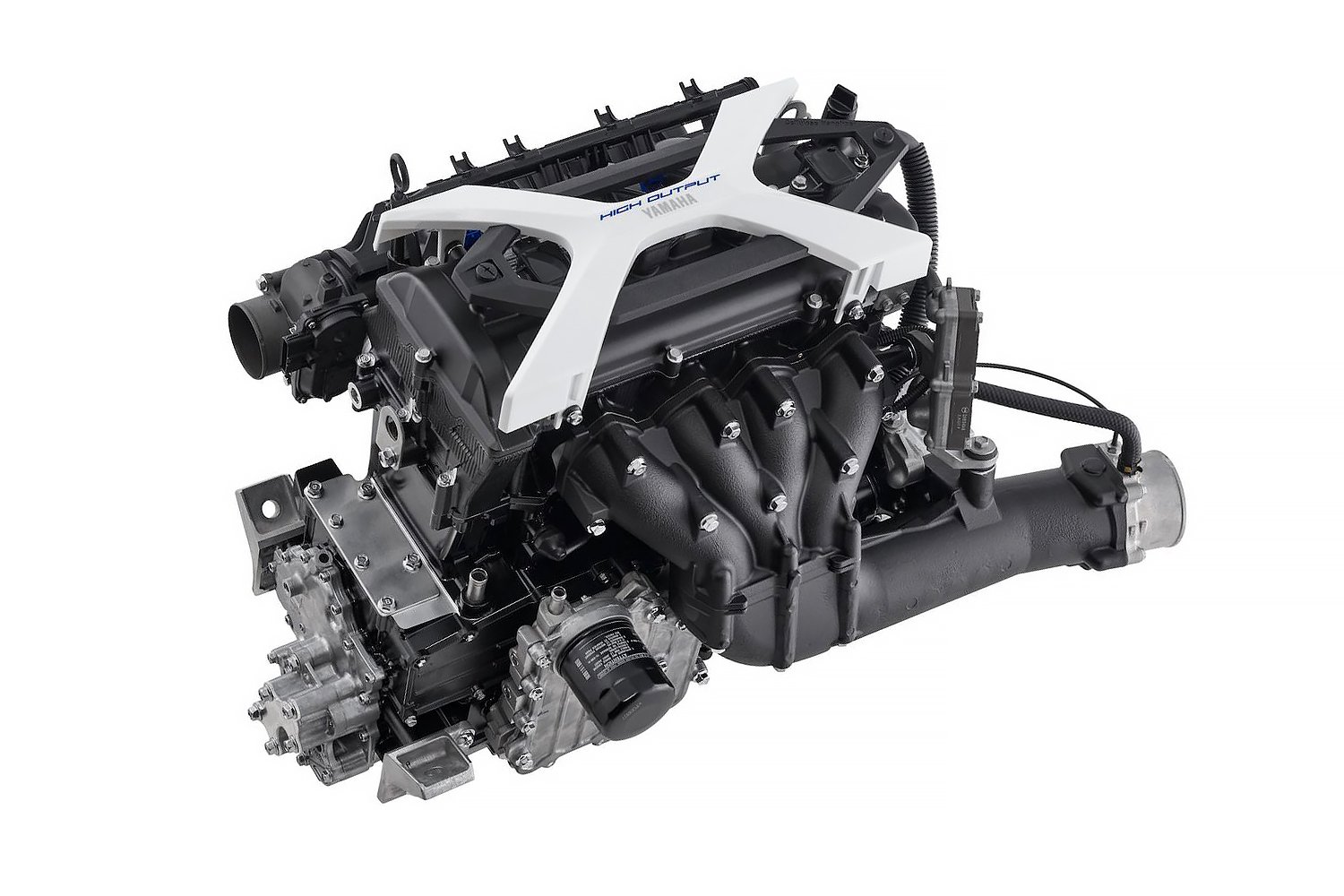Some months back, a few members of the Autosport YouTube channel flew over to Austria to see what the brainiacs at AVL RACETECH have been cooking up in their hydrogen skunkworks kitchen. Apparently, AVL has been working on a “Hydrogen Internal Combustion Engine” (H2-ICE) race engine for a few years now, and testing has gone rather well.
Locked, loaded, and ready for some dyno documentation, the AVL team immediately set to explaining that reliable, clean power could efficiently run on the stuff that science fiction films are built upon. Or at least, explaining how they very well soon could be powering a race car or two.
Up until now, H2-ICE technology has been synonymous with low-performance figures and a lean burn. That, or they produce tons of power, but have the shelf-life of store-bought sushi. AVL RACETECH has taken to the task of building an H2-ICE racing engine that corrects all of these issues, while running both reliably and incredibly cool. All with no fewer than 200 horsepower per liter mind you.
So without further ado, let’s queue the ominous mad scientist music, pour ourselves a couple of big-ass glasses of H20, and get to talking hydrogen power for a quick tick on the odometer or two.
Making Hydrogen Racing a Reality
It was back in 2022, that AVL first teased the idea of creating an engine that was powered by hydrogen (H2) alone. A 100-percent zero-carbon engine that was unlike any other H2-ICE that came before it.
Traditionally, these sorts of engines have relied upon an extremely lean burn rate for their operation, which needless to say hampers performance and makes longevity a bit of a crap shoot. Knowing this full well, AVL set to making its race engine far less of a “lean-burner,” and one that could match (or best) a comparable two-liter turbo racing engine in power output.
We’ll discuss what type of boosted small-scale engine the AVL team ended up with here in a rev or two. Just note that AVL RACETECH dabbles in everything from LMP2 (Le Mans Prototype 2) class cars and Ducati MotoGP race program engineering to Dakar buggies and racing simulator manufacturing. So its engine menu options were expansive.
Realizing performance values at motorsport level with a hydrogen internal combustion engine is an incredibly complex technical challenge. But our prototype proves it can be done. — Project Manager Paul Kapus, Manager Development Spark Ignited Engines & Concept Cars
How To Keep An H2-ICE Race Engine Alive
What AVL’s engineers ended up with was a 205-horsepower-per-liter (150 kW per liter) prototype H2-ICE race engine that doesn’t run nearly as hot as other types of hydrogen-fueled engines. Furthermore, these figures proved to be impressively reliable, and solidified the claim that intelligent PFI water injection could not only moderate combustion, but improve power outputs as well.
With an engine speed of 6,500 rpm landing the horsepower figures listed above, and 369 pound-feet of torque being secured at somewhere between 3,000 to 4,000 rpm, Brake Mean Effective Pressure (BMEP) came out at an even 32 bar. But that was just the tip of the iceberg.
We are forerunners in many aspects of motorsport with AVL RACETECH and have now made the decision to become leaders in the area of hydrogen combustion engines as well. This is why we are building our own racing engine for the first time in the more than 20-year history of the AVL motorsport department. [We] are confident that hydrogen combustion technology will play a significant role in achieving a zero carbon future in motorsport.—Ellen Lohr, Director Motorsport AVL
With water injection being the primary focus, this hydrogen engine’s usage of a specialized injector design that sprays water into the intake air has made a massive difference in its capabilities. Not only does this bump boost pressure, but the evaporated liquid significantly lowers the temps of the combustion chamber during the cycling process.
AVL apparently went through a ton of different simulations and 3D flow calculations when designing these injectors and the valves that would rely upon their H2O atomization. Air, fuel, and exhaust gas flows all had to be carefully monitored and benchmarked to make sure that the the engine was not put through the ringer.
Thanks to that intelligent PFI water injection saturating the engine’s intake air, the unwanted premature ignition problems often found in high-performance H2-ICE motors were virtually eliminated. Of course, this meant tinkering with air-fuel ratios, which ended up as a Lambda of 1.0, but that’s kind of the purpose of this little experiment. To see if you can reach a sustainable air-fuel ratio that still creates impressive, race-grade power.
For all you chemistry buffs out there noting that these stoichiometric air-fuel ratios take the engine safely out of the lean range, take additional note of this next fast fact. AVL found that the trick to keeping the air oversaturation issue in check was to simply lower flow by attaching a specialized wastegate, and then dialing it back so that the turbocharger isn’t force-feeding too much air into the plenum.
Hitting the Watering Hole With a Few Friends
But before moving on to the next milestone, which involves placing this H2-ICE engine concept in a car and taking it out on track, some recognition is due to those who made this engine a reality. If it were not for Hungarian HUMDA Lab, AVL RACETECH may never have been able to create the first race engine to bear its name.
Relatively unknown over here in America, HUMDA Lab is the leading organization behind all Hungarian national motorsport research and development activities and is comprised of a devout group of researchers, automotive system engineers, motorsport professionals, software developers, and project managers. All race-engineering-minded individuals with an eye for creative solutions.
Established in 2021 as a “nonprofit organization focusing on scientific research, knowledge transfer, as well as high-tech and infrastructural developments in motorsports,” this specialized skunkworks operation has been swiftly shaping the European automotive industry one revolution at a time since its inception. So to say that this nonprofit helped make this motor possible would be a sizable understatement.
The results achieved by our H2 racing engine confirm that we are able to deliver an extremely competitive package with this technology. The goal of AVL RACETECH is to lead motorsport into a sustainable future. With the development of the first racing engine developed under our own name – a high-performance H2 -ICE – we have taken another step closer to achieving this vision. — Ellen Lohr, Director Motorsport AVL
Being that materials and fit-and-finish were of maximum importance to this project, AVL RACETECH turned toward one of the best in the biz for the nuts and bolts of the matter. This meant working closely with M&H Engineering, as it played a crucial role in this H2-ICE motor’s birth. Long revered as one of the international leaders in additive manufacturing innovation, 3D metal printing, and the finishing of complex high-end components, it was M&H that made the physical structure of this engine a reality.
For internals, AVL summoned VENTREX, thanks in part to its reputation for being a global leader in automotive valve solutions. Designing and producing electronic pressure regulators for the turbocharged motor and all of the cooling circuitry needed to keep the hydrogen system running smooth and cool was tackled by this Austrian powerhouse, and as the video illustrates, is absolutely brilliant.
And finally, there was WEISSGERBER Engineering GmbH, a firm that can manufacture pretty much anything. WEISSGERBER not only develops and produces its own line of metrology components and devices, but it has the capacity to construct one-off ignition components for spark-ignited combustion in something like a hydrogen engine for example.
All these companies and people are working towards a single goal – to maintain the sustainability of internal combustion in motorsports.













